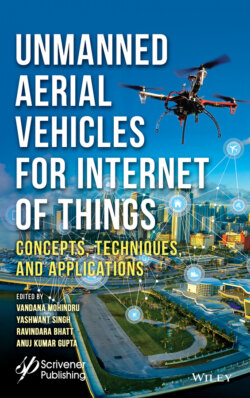Читать книгу Unmanned Aerial Vehicles for Internet of Things (IoT) - Группа авторов - Страница 43
1.4.1 In Military
ОглавлениеNikola Tesla, in 1898, first developed which was arguably the first remote-controlled unmanned vehicle, also called ‘Teleautomation’, a boat controlled by radiofrequency. From those humble times, unmanned systems have undoubtedly achieved a huge milestone. In today, UAVs accomplish many missions and roles in the service of the military as well as in other sectors. Military are currently the principal operators of UAVs employing the paramount technologies including stealth features. Primary military drones include services like ISR (Intelligence, Surveillance, and Reconnaissance) or light attack functions. They range from small or medium tactical drones to high-altitude, the long-endurance once. Combat-enabled drones, like the armed version of reaper or predator, can carry out light attacks or against light-ground targets which are also widely reported in Libya and Afghanistan [27].
UAV can be used for military missions “Dangerous, Dull, dirty” as there is no loss of life asset. Also, robots don’t mind circling a particular area for a dozen hours and can be operated in military and civil environments. They are also used to carry notorious missions of surveillance, security, and attack. In today’s world, the term ‘Unmanned Aerial’ has gained so much acceptance, and when these things are combined with a ground control station and a communication channel (or data link) they constitute UAS. Nowadays, UAS are cheaper to operate, procure, and maintain when compared to manned aircraft with some limitations. As they eliminate the risk of a pilot’s life while in operation and their capabilities like endurance aren’t constrained by human limitations [28]. However, in the future, they could be used for air-refueling, resupply, air combat, and search and rescue operations. The remote operation of UAS has been made more practical because of the availability of advanced navigation and satellite communication technology. The capability of UAV to loiter, search & strike the targets while minimizing the collateral damage, makes this thing an indispensable weapon. Its features are further enhanced by using multispectral thermal and night vision state of the art cameras and better remote control allows the UAS to take on more reconnaissance roles. Today’s UAV can remain on a mission for 30–40 h, far beyond the capabilities of any human crew. Research into ultra-efficient solar power and in-flight refueling could help in increasing the range of UAVs, limited primarily by maintenance needs.
